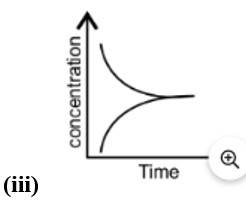Ncert Solutions Chemistry Class 11th
Get insights from 2k questions on Ncert Solutions Chemistry Class 11th, answered by students, alumni, and experts. You may also ask and answer any question you like about Ncert Solutions Chemistry Class 11th
Follow Ask QuestionQuestions
Discussions
Active Users
Followers
New answer posted
5 months agoContributor-Level 10
This is a Matching Type Questions as classified in NCERT Exemplar
Ans: (i) → (c); (ii) → (a); (iii) → (b).
New answer posted
5 months agoContributor-Level 10
This is a Matching Type Questions as classified in NCERT Exemplar
Ans: (i) → (b); (ii) → (e); (iii) → (c); (iv) → (d)
New answer posted
5 months agoContributor-Level 10
This is a Matching Type Questions as classified in NCERT Exemplar
Ans: (i) → (d); (ii) → (a); (iii) → (b).
New answer posted
5 months agoContributor-Level 10
This is a Matching Type Questions as classified in NCERT Exemplar
Ans: (i) → (d); (ii) → (c); (iii) → (b)
New answer posted
5 months agoContributor-Level 10
This is a short answer type question as classified in NCERT Exemplar
Hydrogen has electronic configuration 1s1. On the one hand, its electronic configuration is similar to that of alkali metals in the first group of the periodic table, which have an outer electronic configuration (ns1). As a result, hydrogen resembles alkali metals that lose one electron to become unipositive ions.
New answer posted
5 months agoContributor-Level 10
This is a short answer type question as classified in NCERT Exemplar
(i) The given compound is H2O2.
(ii) Textiles, paper pulp, leather, oils, fats, and other products use it as a bleaching agent. In both acidic and alkaline media, it works as an oxidising and reducing agent. It is therefore kept in dark wax-lined glass or plastic containers. As a stabiliser, urea might be used. It is kept away from dust since dust can cause the compound to decompose explosively.
New answer posted
5 months agoContributor-Level 10
This is a Matching Type Questions as classified in NCERT Exemplar
Ans: (i) → (b); (ii) → (d); (iii) → (c); (iv) → (a).
New answer posted
5 months agoContributor-Level 10
This is a Multiple Choice Questions as classified in NCERT Exemplar
Ans: options (i) and (iv)
Ice and water are in equilibrium only at particular temperature and pressure. For any pure substance at atmospheric pressure, the temperature at which the solid and liquid phases are at equilibrium is called the normal melting point or normal freezing point of the substance. For example, it is 4°C in case of water. The system here is in dynamic equilibrium.
New answer posted
5 months agoContributor-Level 10
This is a short answer type question as classified in NCERT Exemplar
The compound is water which undergoes self ionization.
The autoprotolysis (self-ionization) of water takes place as follows:
H2O (l) + H2O (l) → H3O+ (aq) + OH- (aq)
Acid Base &nb
New answer posted
5 months agoContributor-Level 10
This is a Multiple Choice Questions as classified in NCERT Exemplar
Ans:, option (i), (iii) and (iv)
As, K increases with increase in temperature. K increases, it shows that the reaction must be endothermic. No. of molecules increases thus, there is increase in entropy.
Taking an Exam? Selecting a College?
Get authentic answers from experts, students and alumni that you won't find anywhere else
Sign Up on ShikshaOn Shiksha, get access to
- 65k Colleges
- 1.2k Exams
- 679k Reviews
- 1800k Answers



